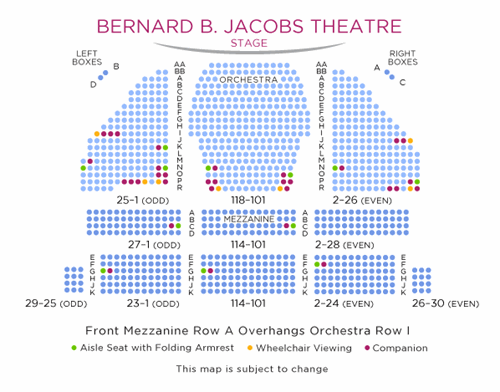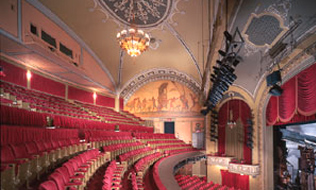

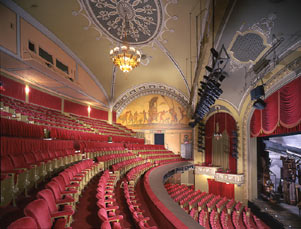
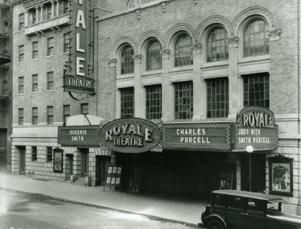
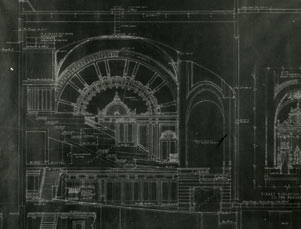
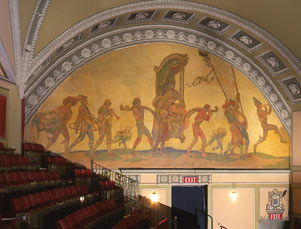
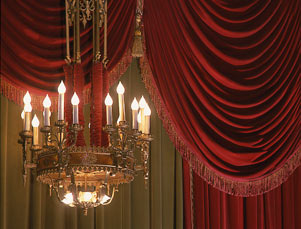
The story that defined a generation, reimagined as a groundbreaking musical
The winner of 4 Tony Awards®, including Best Musical, and 2 Drama Desk Awards is The Outsiders.
Adapted from S.E. Hinton’s seminal novel and Francis Ford Coppola’s iconic film, this thrilling new Broadway musical features a book by Adam Rapp with Justin Levine, music and lyrics by Jamestown Revival (Jonathan Clay & Zach Chance) and Justin Levine, music supervision, orchestration, and arrangements by Justin Levine, choreography by Rick Kuperman & Jeff Kuperman, and direction by Tony Award® winner Danya Taymor. The New York Post calls it “The Best New Musical of the Season.”
In Tulsa, Oklahoma, 1967, Ponyboy Curtis, his best friend Johnny Cade and their Greaser family of ‘outsiders’ battle with their affluent rivals, the Socs. The Outsiders navigates the complexities of self-discovery as the Greasers dream about who they want to become in a world that may never accept them. With a dynamic original score, The Outsiders is a story of friendship, family, belonging…and the realization that there is still “lots of good in the world.”
HISTORY
The Bernard B. Jacobs Theatre (formerly the Royale) was originally built in 1927 by real-estate magnates, the Chanin Brothers, as part of a three-theatre complex that also included the Majestic (a large musical house) and the Theatre Masque, now the John Golden (a small house). The three theatres enabled producers to move shows based on their ticket sales to the most appropriately-sized venue. In 1930, the Chanins transferred ownership of all three houses to the Shuberts. During the Depression, control of the Jacobs passed to John Golden, who renamed the theatre after himself and ran it from 1934 to 1936. The Shuberts regained control in 1936, restored its name to Royale, and leased it to CBS as a radio studio until 1940. It was renamed the Bernard B. Jacobs in 2005 to honor the president of the Shubert Organization from 1972 - 1996.
ARCHITECTURE
Herbert J. Krapp designed the Jacobs and the other theatres in this complex under the unifying theme of “modern Spanish style.” The theatre's interior features a groin-vaulted ceiling supported on either side by archways decorated with two murals entitled "Lovers of Spain," by Willy Pogany.
Spotlight on Broadway: Bernard Jacobs Theatre from Spotlight on Broadway on Vimeo.
Details on the Bernard B Jacobs Theatre's Accessibility
Access Information
Theatre is not completely wheelchair accessible.
Shubert Audience Services
The Bernard B Jacobs Theatre provides accommodations for patrons who are blind, deaf, partially sighted, and/or have hearing loss. The theatre provides infrared assistive listening devices for every performance at the theatre. In addition, beginning four weeks after a show’s official opening night performance, hand-held audio description devices, hand-held captioning devices, and unlimited access to downloadable audio description and/or captioning for personal mobile devices are all available free of charge. Prior thereto, we offer live-caption via CART using a hand-held device, upon request with two-weeks’ advance notice. For assistance, or If you have questions, contact Shubert Audience Services at 212-944-3700 or audienceservices@shubertorg.com. There is also a representative at the Shubert Audience Services kiosk at every performance to assist any patron with any of our devices, software, or technology. Hand-held devices are limited, although additional devices can be obtained with at least twenty-four hours’ notice.
Accessibility by Seating Section
Orchestra Location: Seating is accessible to all parts of the Orchestra without steps. There are no steps to the designated wheelchair seating location.
Mezzanine Location: Located on the Second Level, up 3 short flights of stairs (29 steps). Once on the Mezzanine Level there are approximately 2 steps up/down per row.
Handrails: Available at the end of every stepped seat row in the Mezzanine.
Wheelchair | Companion Seat Locations:
Orchestra: R102 | R101, P101-102; R113 | R114, P114-115; P3 | P1, O1-3; P7 | P9-13; I21 | I115-19; J24 | J18-22; R24 | R18-22
Aisle Seat with Folding Armrest | Companion Locations:
Orchestra: K1 | K3; N1 | N3; N2 | N4
Elevators/Escalator
None Available
Restroom
Wheelchair accessible (unisex) restroom located on the Orchesta level.
Water Fountain
Located in restrooms.
Theatre Policies
The use of cameras, recording devices, cell phones, beepers, and other electronic devices during the performance is prohibited, except as permitted for accessibility services. Everyone attending a performance must have a ticket. Latecomers will be seated at the discretion of management. Wheelchair and mobility-impaired seating is intended for patrons with mobility disabilities. Children under the age of four years will not be admitted. No outside food or beverage permitted, unless medically necessary. No weapons permitted on the premises.
THEATRE SPECS
Bernard B. Jacobs Theatre
242 West 45th Street
Between Broadway and 8th Avenue
New York NY 10036
| Year Built | 1927 |
| Seating Capacity | |
| Orchestra | 636 |
| Front Mezzanine | 168 |
| Rear Mezzanine | 252 |
| Boxes | 16 |
| Total | 1092 |
| Included in Numbers Above: | |
| Orchestra Pit | 30 |
| Wheelchair | 7 |
| Aisle Transfer Arm | 12 |
| Standing | 20 |
| Theatre Dimensions | |
| Proscenium Opening: | 40' 0" |
| Height of Proscenium: | 24' 0" |
| Depth to proscenium: | 26' 4" |
| Depth to front of stage: | 30' 1" |
| Stage Type: | Proscenium |
